Sourcing impartial data is an essential step in conducting a Health Equity Impact Assessment. In this short FAQ, DataGen’s Melissa Bauer, principal healthcare informatics analyst, explains: impartial data in relation to health equity assessment and advancement; why impartial data are needed; and how impartial data help hospitals, ambulatory surgery centers and other providers evaluate how healthcare proposals may or may not impact underserved communities. FAQ 1: What are impartial data? Third-party data sources and independent entities are to provide impartial data. These data provide an accurate understanding of the potential effects of healthcare initiatives while helping to ensure that supporting data points and, ultimately, decisions are not biased toward the provider. An example of impartial data would include the underserved/marginal population rates for the service area of contracting providers. FAQ 2: Why i...
